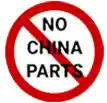Posted on January 22, 2025 fred parker Electronics Components
In today's technological landscape, automation systems play an integral role in optimizing processes across various industries. However, as more advanced systems are developed, many organizations find themselves relying on legacy automation systems that may no longer meet the demands of modern operations. As such, modernizing these systems has become a critical priority for organizations looking to remain competitive. In this blog, we will go over some key considerations for upgrading legacy systems, so read on to gain insights into how you can navigate any complexities and ensure a successful transition.
What Are Legacy Automation Systems, and Why Modernize Them?
Legacy automation systems refer to outdated hardware or software platforms used to control processes or machines. While once cutting-edge, these systems are often built on older frameworks that are no longer supported by manufacturers. Many companies still rely on legacy systems due to their initial reliability and the significant investment made in them, but they may lack the capabilities required to meet modern demands for integration and scalability. The result is a system that can be prone to failure, difficult to repair, and costly to maintain.
Aside from the reasons just mentioned, there are a few other motivations for upgrading legacy automation systems to more modern alternatives. First is the issue of compatibility, because as new technologies become the standard, integrating legacy systems with modern equipment or software can become increasingly difficult and hinder the seamless flow of information. Moreover, older safety automation features may not comply with the latest regulatory standards, which are non-negotiable in many industries.
Another important factor driving the need for upgrades is that outdated systems can create bottlenecks, reduce efficiency, and introduce safety risks with malfunctions. Conversely, modern automation technologies offer enhanced capabilities like improved data analytics, remote monitoring, and real-time adjustments, which can all greatly improve processes. By upgrading to current automation methods, organizations can improve overall performance and reduce long-term costs associated with maintaining outdated technology.
Key Considerations for Upgrading Legacy Systems
Upgrading or replacing legacy automation systems is not a straightforward task, and there are several important factors to consider. First, organizations must thoroughly assess their current systems to determine which components can be upgraded and which need to be entirely replaced. This evaluation should include an analysis of both hardware and software, as well as an understanding of how these components interact with other systems across the organization. Identifying obsolete parts and mapping out the interdependencies is a critical step in planning upgrades.
Once this assessment is complete, it is important to consider how new automation technologies will integrate with existing processes, if at all. Compatibility between old and new systems can be challenging, so selecting technologies that allow for seamless integration with minimal disruption to ongoing operations is essential. This may require adopting modular approaches to upgrades, where certain parts are modernized incrementally to maintain operations without extensive downtime. As such, it is advisable to work with experienced professionals who specialize in upgrading legacy systems, as they can help navigate the technical complexities of the upgrade and properly account for potential risks.
It is also crucial to establish a comprehensive training program for employees who will be interacting with the new system. Modern automation technologies often come with advanced features that may be unfamiliar to personnel accustomed to old operations, so proper training will ensure that the transition is smooth and that employees can fully leverage the new system’s capabilities.
Challenges in Upgrading Legacy Systems
While the benefits of upgrading legacy automation systems are clear, there are several challenges that organizations commonly face during the process. One of the biggest obstacles is the potential for downtime. During the upgrade or replacement of hardware and software, operations may need to be temporarily halted, which can be costly for businesses that depend on continuous production. As previously mentioned, planning and executing upgrades in phases or during scheduled maintenance windows can help minimize this disruption.
Another challenge involves data migration. Legacy systems often store large amounts of data that are critical to ongoing operations, and ensuring that this data is properly transferred to the new system without loss or corruption is a key concern. This may require investing in specialized tools or services designed to facilitate smooth data migration between systems.
In all, while modernizing legacy automation systems can present challenges, the benefits make it a worthwhile investment for any organization looking to stay ahead in today’s fast-paced industrial environment. By following best practices and carefully managing system transition, companies can overcome challenges and achieve lasting success in their automation efforts.
Where Can I Buy Parts to Upgrade My Automation System?
Buy Industrial Parts is a single-source platform for all the automation components you may need, carrying over 2 billion products that are available for purchase today. We understand the necessity for high-caliber and reliable parts, which is why we have several quality-assurance measures in place that allow us to screen for potential issues before delivering them to customers, including visual inspection, document verification, and more as required. Bearing this in mind, take your time exploring our website, and do not hesitate to utilize our online RFQ forms to request custom quotes on items of interest. When you kick off procurement for the parts you require, you will understand why countless customers consistently rely on our services, so get started at your earliest convenience.
 The only independent
The only independent

“We Proudly Support Intrepid Fallen Heroes Fund that serves United States Military Personal experiencing the Invisible Wounds of War : Traumatic Brain Injury (TBI) and Post Traumatic Stress (PTS). Please visit website (www.fallenheroesfund.org) and help in their valiant effort”.
We hope that you will visit us again the next time you need industrial parts and make us your strategic purchasing partner.
Request for Quote